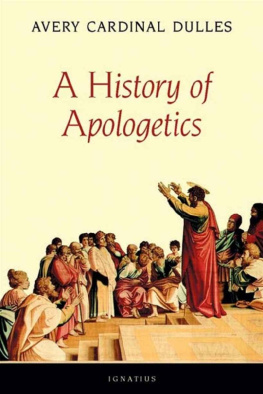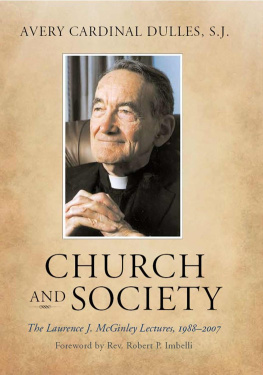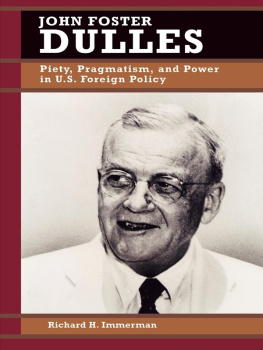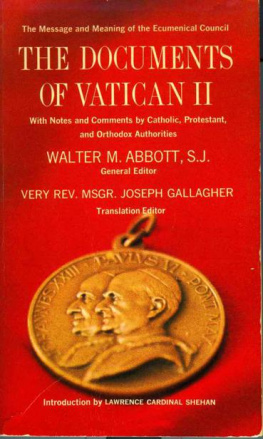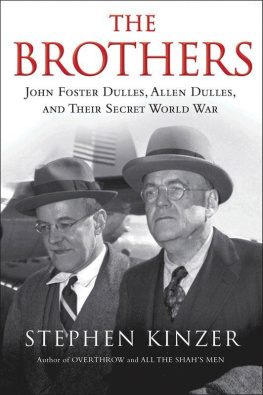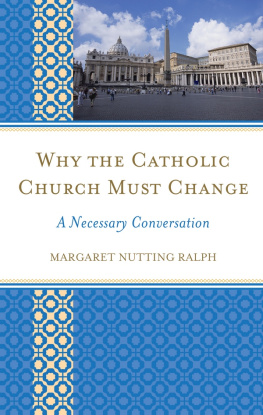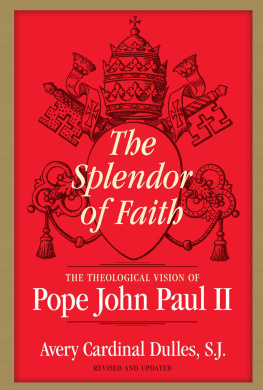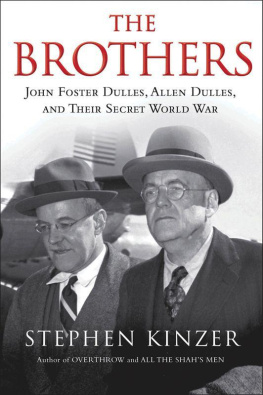
MODELS
OF THE
CHURCH
Avery Dulles, S.J.
[ EXPANDED EDITION ]
IMAGE BOOKS | DOUBLEDAY
NEW YORK LONDON TORONTO SYDNEY AUCKLAND
[ CONTENTS ]
Appendix:
The Ecclesiology of John Paul II
To
GUSTAVE WEIGEL, S.J.
[190664]
teacher, colleague, friend
who taught me
to love the Church
and seek its unity
[ INTRODUCTION
TO THE 2002 EDITION ]
The continued demand for this book has moved the publishers to bring out a new edition at this time. The models proposed in the original text, in my judgment, still provide a valid instrument for analyzing the works on the theology of the Church produced in the years since the original edition of 1974. This can be illustrated by reference to Pope John Paul II, whose writings have normative value for Catholics of our day. I am accordingly adding as an appendix an article on The Ecclesiology of John Paul II, which previously appeared in The Gift of the Church: A Textbook on Ecclesiology in Honor of Patrick Granfield, O.S.B., ed. Peter C. Phan (Collegeville, Minn.: Liturgical Press, 2000), 93110. Except for this Appendix, this edition is identical with that of 1987.
September 2001 Avery Cardinal Dulles, S.J.
[ INTRODUCTION ]
THE DISCIPLINE OF COMPARATIVE ECCLESIOLOGY has for some years been practiced in ecumenical circles. The term usually signifies a systematic reflection on the points of similarity and difference in the ecclesiologies of different denominations. Attempting to account for the fundamental cleavages, ecumenical theologians have pointed to certain polarities, such as protestant vs. catholic, prophetic vs. priestly, vertical vs. horizontal, and institution vs. event. These categories, while illuminating up to a certain point, are in the end too dichotomous. To come flatly down on either side of these alternatives would be to content oneself with a half truth. The categories are too crude to express even the leading insights of any sophisticated ecclesiology.
This book attempts another variety of comparative ecclesiology. From the writings of a number of modern ecclesiologists, both Protestant and Catholic, I have sifted out five major approaches, types, or, as I prefer to call them, models. Each of these models is considered and evaluated in itself, and as a result of this critical assessment I draw the conclusion that a balanced theology of the Church must find a way of incorporating the major affirmations of each basic ecclesiological type. Each of the models calls attention to certain aspects of the Church that are less clearly brought out by the other models.
In selecting the term models rather than aspects or dimensions, I wish to indicate my conviction that the Church, like other theological realities, is a mystery. Mysteries are realities of which we cannot speak directly. If we wish to talk about them at all we must draw on analogies afforded by our experience of the world. These analogies provide models. By attending to the analogies and utilizing them as models, we can indirectly grow in our understanding of the Church.
The peculiarity of models, as contrasted with aspects, is that we cannot integrate them into a single synthetic vision on the level of articulate, categorical thought. In order to do justice to the various aspects of the Church, as a complex reality, we must work simultaneously with different models. By a kind of mental juggling act, we have to keep several models in the air at once.
This book is written from a Roman Catholic point of view. In the popular mind, the Catholic Church is identified with what I describe as the institutional model of the Church. Catholics, therefore, are commonly thought to be committed to the thesis that the Church is most aptly conceived as a single, unified perfect society. For reasons explained in this book, I hold that Catholics today should not wish to defend a primarily institutional view of the Church. Reacting somewhat against earlier concepts of Catholicism, I take a deliberately critical stance toward those ecclesiologies that are primarily or exclusively institutional. But throughout this book I insist that the institutional view is valid within limits. The Church of Christ does not exist in this world without an organization or structure that analogously resembles the organization of other human societies. Thus I include the institutional as one of the necessary elements of a balanced ecclesiology.
The most distinctive feature of Catholicism, in my opinion, is not its insistence on the institutional but rather its wholeness or balance (and here one might indulge in some playing on the etymology of the word catholic as the Greek equivalent for universal). I am of the opinion that the Catholic Church, in the name of its catholicity, must at all costs avoid falling into a sectarian mentality. Being catholic, this Church must be open to all Gods truth, no matter who utters it. As St. Paul teaches, it must accept whatever things are true, honorable, just, pure, lovely, gracious, and excellent (cf. Phil. 4:8). Thus I find no conflict between being Catholic and being ecumenical. I hope I have succeeded in being both.
The basic idea of a typological approach to theological problems came to me some years ago when pondering the problem of faith and reason with the help of H. R. Niebuhrs classic, Christ and Culture. I found Niebuhrs five typical visions of the relationship between Christ and human culture exceptionally stimulating and helpful. Later, when preparing a paper on ecumenism, I was struck by the realization that the various points of view on the relationship between the Church and the churches are determined, to a great extent, by the models of the Church that one is presupposing. Ever since that idea arose in my mind I have had the desire to write a book expounding and comparing the prevalent models of the Church.
The number of models may be varied almost at will. In some presentations I have invoked as many as seven or eight. For simplicitys sake, I find it better to work with as few as possible, and for that reason I have here reduced the basic models to five. Each of these, however, could be broken down into several subtypes; and not every statement I make about the major types applies equally well to all the subtypes. This limitation in typological analysis has long been recognized as inevitable by sociologists, psychologists, and others.
It should be scarcely necessary to point out that no good ecclesiologist is exclusively committed to a single model of the Church. In drawing on various authors to illustrate one or another of my ecclesiological types, I am seeking examples of certain avenues of approach to the mystery of the Church; I am in no way seeking to pass judgment on the total achievement of the theologians I discuss. While picking out what is dominant in a given authors work at a certain stage of his career, or in a certain discussion, I am consciously leaving out things the same author may have said at another time and in another context. Thus, when I use Karl Barth to exemplify the kerygmatic approach to ecclesiology, I am quite aware that some of his later work could be used also to illustrate certain other approaches.
The method of models is applicable to the whole of theology, and not simply to ecclesiology. To a great extent, the five basic types discussed in these pages reflect distinctive mindsets that become manifest in a given theologians way of handling all the problems to which he addresses himself, including the doctrine of God, Christ, grace, sacraments, and the like. At various points in this work, especially in the chapter The Church and Revelation, I touch briefly on the connection between the types used in ecclesiology and in the other treatises. I content myself with a few brief indications because my own categories in this work are deliberately selected with a view to ecclesiology. It is by no means clear that the appropriate categories for another treatise, such as Christology, would be the same. Other authors more thematically concerned with Christologysuch as John Mclntyre and James M. Gustafsonhave come up with their own categories, which do not precisely correspond to mine or to each others. It may well be that different models have to be forged to handle the material treated in different theological disciplines. To try to construct a basic typology valid for theology as a whole, and not simply for a particular branch, would be a much vaster enterprise than I have wished to undertake in this book.
Next page

